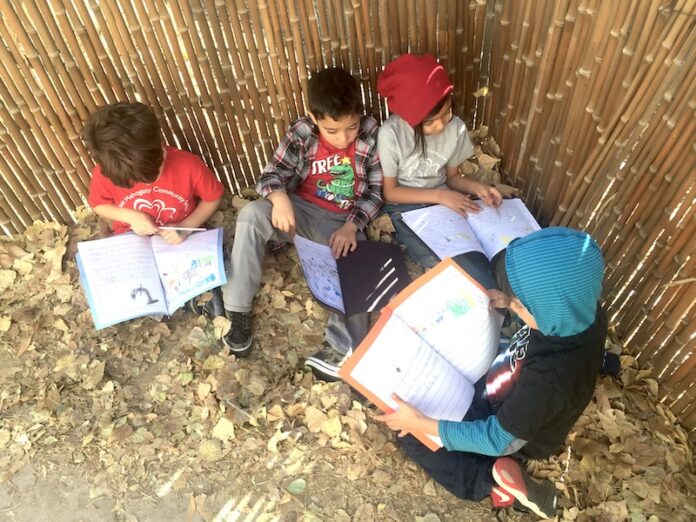Growth was trending in the wrong direction at Wayne-Westland Community Schools but pulling students out of the class for interventions was not Superintendent John Dignan’s solution. To reverse learning loss coming out of the pandemic, Dignan brought in some new learning resources that allow teachers in the Michigan district to embed interventions into core instruction.
“It forces collaboration between social studies, math, English and science teachers,” he explains. “They’re working together and our kids are getting the medicine they need—it’s not just about remediation, it’s about acceleration.”
Literacy growth rates had slipped to under 40% during the height of COVID but have now resurged to over 50% of students meeting expectations. Dignan’s main solutions are HMH’s Math 180 and Read 180 and the platforms’ new Flex component that helps teachers adapt instruction toward individual students’ learning needs, Dignan attests.
Principal Lori Webster and Reading Interventionist Alexandra Wilcox have made embedded interventions in both the methodology and the mindset at Mountain Mahogany Community School in Albuquerque, New Mexico. Back in 2018, only 20% of the small charter school’s students scored proficient in reading. To boost literacy rates, the two educators have since had their elementary school teachers participate in IMSE’s training in the Orton-Gillingham multisensory approach to the science of reading.
More from DA: This superintendent sees trust in K12 eroding. Here is what he’s doing
It incorporates writing, reading and talking, and the method is the same whether students are in their regular classes or receiving a push-in intervention in their classrooms. “I would love for more teachers to understand that this is not just additional work for them, this is in exchange for things that they already teach,” Wilcox says. “What I’ve noticed as our teachers have implemented it is they feel like we’re taking some things away because it is working.”
Mountain Mahogany is now recognized as a Structured Literacy Model School by the New Mexico Public Education Department. “What’s most rewarding for me as a teacher is seeing confidence grow,” Wilcox explains. “I see students go from ‘I can’t do this’ to ‘Oh, I can do this.’ It’s like cracking the code.”
Embedded interventions inspire independence
Teaching and assessing literacy is the top professional development priority at Wayne-Westland Community Schools and HMH’s Flex instruction has replaced disruptive pull-out interventions. “Even Pre-COVID, a large percentage of kids were coming in one or two grade levels behind,” Dignan points out. “As a central office team, we knew we wouldn’t be able to intervene our way out of it.”
More students are now catching up to grade level and moving on to accelerated instruction. Students are able to see the progress they are making as they are better grasping the texts and making improvements in all of their core classes. The adaptive platforms allow teachers to abandon traditional “stand-and-deliver” instruction and give students more autonomy and independence.
“Going through everything being virtual and combing back, some of the skills teachers picked up allowed them to become facilitators of learning and use more small group instruction in lieu of the traditional ‘For the next 55 minutes, you’re going to listen to me talk,'” Dignan concludes. “We’re moving way past that.”
District Administration’s Superintendent’s Playbook series examines how superintendents, principals and other administrators are solving common problems that today’s educators are facing.










